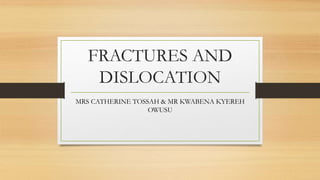The document discusses fractures, dislocations, and their treatment. It defines fractures and describes different types including closed/open, pathological, and stress fractures. Signs and symptoms of fractures and dislocations are outlined. The principles of diagnosing and treating fractures are described, including reduction, splinting, and casting. Factors that influence fracture healing are also mentioned.









































